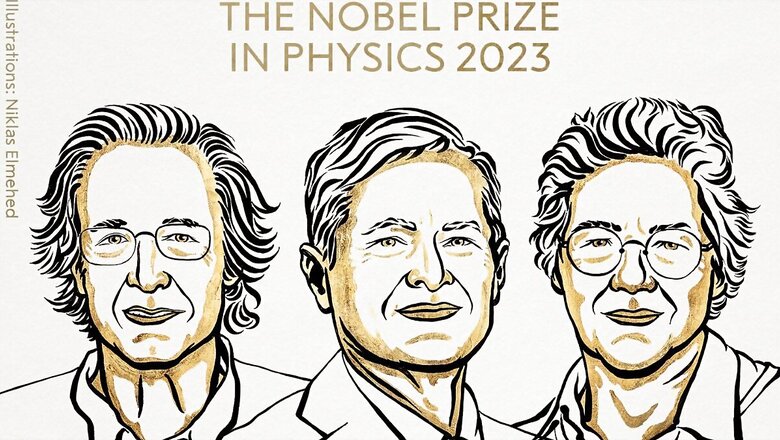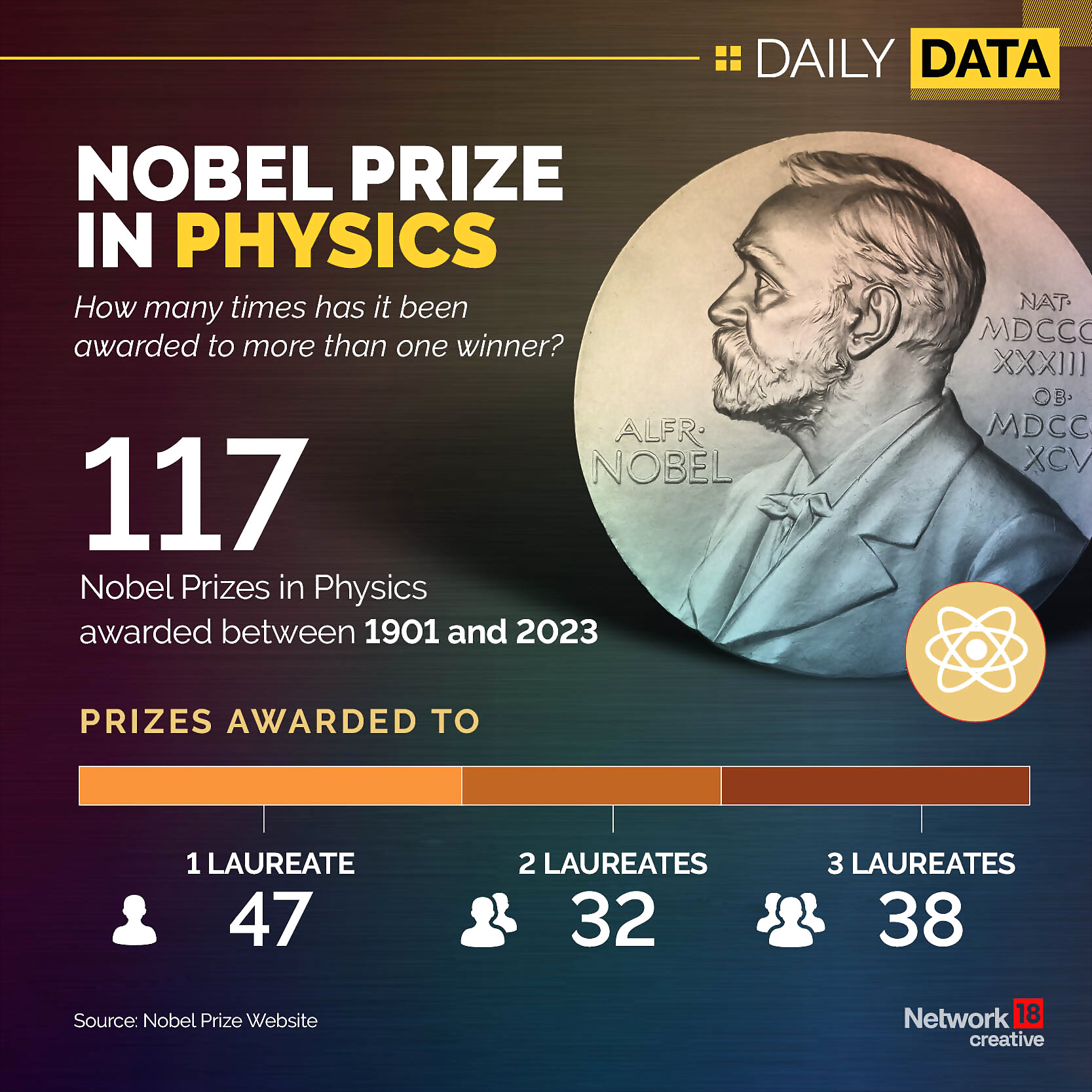
views
There are several processes around us in our everyday lives happening within a flip of a second. The firing of a bullet, the flipping of wings in a hummingbird or a lightning strike happens within a few milliseconds. With the advancing technology, several cameras have been developed with extremely high shutter speeds to capture the minutest of movements that occur so fast that are beyond human vision to be seen.
But there are a lot of movements and processes going on in the universe at atomic and subatomic levels that are beyond extremely high shutter-speed cameras. There are processes that are even faster, happening within a few attoseconds (thousandth of a femtosecond or 10-18 seconds) like the motion of electrons within the atom.
France’s Pierre Agostini, Hungarian-Austrian Ferenc Krausz and Franco-Swede Anne L’Huillier have been awarded the Nobel Prize in physics on Tuesday for research using ultra quick light flashes to study electrons inside atoms and molecules.
The group of three researchers have revolutionized how scientists study the electron- by illuminating molecules with attosecond-long flashes of light.
Why is the Research Revolutionary?
For a long time, femtosecond ‘photography’ was considered the limit. A femtosecond is one quadrillionth of a second, or 10^-15 seconds. It is so short that it takes light travelling at 186,000 miles per second more than 5 hours to travel across the diameter of an atom.

However, the production of shorter pulses of light, in the attosecond range, was not considered possible at that time. There are one thousand attoseconds in a femtosecond. The laureates’ research has made it possible to examine moves or changes so rapid that they were previously impossible to follow, with potential applications in both electronics and medical diagnostics.
How long is an attosecond?
“Atto” is the scientific notation prefix that represents 10⁻¹⁸, which is a decimal point followed by 17 zeroes and a 1. Attoseconds are a billionth of a billionth of a second. So, a flash of light lasting an attosecond, or 0.000000000000000001 of a second, is an extremely short pulse of light.
In fact, there are approximately as many attoseconds in one second as there are seconds in the age of the universe.
To give a little perspective, there are around as many attoseconds in a single second as there have been seconds in the 13.8-billion year history of the universe.
How will Attosecond pulses Help Science?
The researchers have put in a lot of effort into figuring out how electrons are moving and rearranging. The rearrangement of electrons in atoms and molecules guides a lot of processes in physics, and it underlies practically every part of chemistry. Therefore, researchers have put a lot of effort into figuring out how electrons are moving and rearranging.
Attosecond spectroscopy provides shorter snapshots of atoms and molecules which helps researchers understand electron behaviour in single molecules, such as how electron charge migrates and how chemical bonds between atoms break.
So far, scientists have mostly only been able to use attoseconds to observe electrons. But experts say that it may be possible to control the electrons and to manipulate their motion in future.
“We can now open the door to the world of electrons. Attosecond physics gives us the opportunity to understand mechanisms that are governed by electrons,” Eva Olsson, chair of the Nobel Committee for Physics, said in a statement.
Why do we need such speed?
Being able to operate on this timescale is important because these are the speeds at which electrons operate.
For example, it takes electrons 150 attoseconds to go around the nucleus of a hydrogen atom. This means the study of attoseconds has given scientists access to a fundamental process that was previously out of reach.
All electronics are mediated by the motion of electrons — and the current “speed limit” is nanoseconds, Hans Jakob Woerner, a researcher at the Swiss university ETH Zurich, told AFP.
If microprocessors were switched to attoseconds, it could be possible to “process information a billion times faster,” he added.
(With inputs from agencies)




















Comments
0 comment